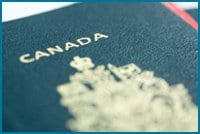Every year AIDS Committee of Toronto education coordinator Rui Pires gets a handful of calls from distraught travellers headed down south on vacation.
“They’ll say, ‘I’ve just been denied entry into the United States.’ Usually it’s because border guards search the vehicle and find HIV meds,” he explains. That’s because a 15-year-old section of the US Immigration and Nationality Act deems people with HIV “inadmissible” for entry into the US without a difficult-to-obtain waiver.
Those caught trying to skirt the rules are treated more like terrorists than tourists: they’re fingerprinted, their names are added to a watch list and they’re turned back at the point of entry.
“People are generally shocked because they haven’t committed any crimes and they aren’t politically active,” Pires says. He adds that all the complaints he’s received over the years have come from gay men, a factor he attributes to US border guards targeting people who “look or act different.”
But on Jul 30, the eve of the 17th International AIDS Conference in Mexico City, US president George W Bush signed into law a bill extending $50 billion in funding for the President’s Emergency Plan for AIDS Relief (PEPFAR II) through 2013. Along with it an amendment introduced by Democratic senator John Kerry and house representative Barbara Lee eliminated the ban on people living with HIV from visiting the United States.
The move was met with widespread approval from human rights advocates, gay and lesbian groups and public health officials, who long criticized the restrictions as ineffective and unnecessary. But some organizations say the changes may not entirely end discrimination faced by HIV-positive travellers.
In a paper on PEPFAR II, the Global AIDS Alliance (GAA) says that while the measure removes the blanket ban, responsibility for future policy decisions now rests with public health officials.
“This means that, for people living with HIV/AIDS who wish to visit the US on temporary visas or to apply for asylum or refugee status, HIV will no longer be grounds for inadmissibility,” the GAA paper states. “However, the US Department of Health and Human Services (HHS) can still designate HIV/AIDS a disease of public health significance,” which would have the same effect as a travel ban.
Until HHS overhauls its rules the current restrictions also technically remain in effect, points out Joan Anderson, a community consultant who helped plan the 2006 International AIDS Conference in Toronto.
“The law has been repealed but it wasn’t the only step that needed to be taken,” Anderson says. “It could take months for new rules to be drafted.”
Anderson says the change is promising because it lets public health experts – rather than politicians like Jesse Helms, who was behind the first ban proposal in 1987 – to decide if HIV status is grounds to prevent someone from entering the US. Under the Clinton administration HHS tried to remove HIV from its list of exclusionary illnesses before the Republican-controlled Congress passed a law in 1993 forcing it to remain, she adds.
“There’s an expectation that Health and Human Services will take steps to lift the ban because they didn’t advocate for it in the first place,” she says.
Anderson also speculates that the policy won’t be changed until after the presidential election this fall. Presumed presidential nominees Barack Obama and John McCain have both supported lifting the HIV travel ban.
Brian Moulton, associate counsel for the US-based gay, lesbian, transgender rights group Human Rights Campaign, says activists are trying to put “as much public pressure as possible” on the US health secretary Mike Leavitt to review the ban while the issue is still fresh.
“There’s a limited amount time left in the current administration’s timetable and in secretary Leavitt’s timetable,” Moulton says. “There’s a chance that, either intentionally or unintentionally, they won’t get around to fixing this…. Obviously, we don’t want the policy in place any longer than it has to be.”
There’s further concern about what kinds of visitors will benefit from the lifting of the ban. It’s widely believed the US will ease restrictions for temporary visitors and refugees. Less certain is how it will address HIV-positive immigrants, migrant workers and long-term visa applicants who are also barred from the country.
“Criticism [of the travel ban] has really focused around freedom of entry and freedom of movement through the US,” says Anderson. “I don’t know how far they’ll go with other restrictions.”
Moulton says the HRC and other US advocacy groups are unequivocal in their demand for “a complete removal of the ban, meaning people can get into the country for a range of reasons assuming they’re meeting other entry requirements.”

 Why you can trust Xtra
Why you can trust Xtra


